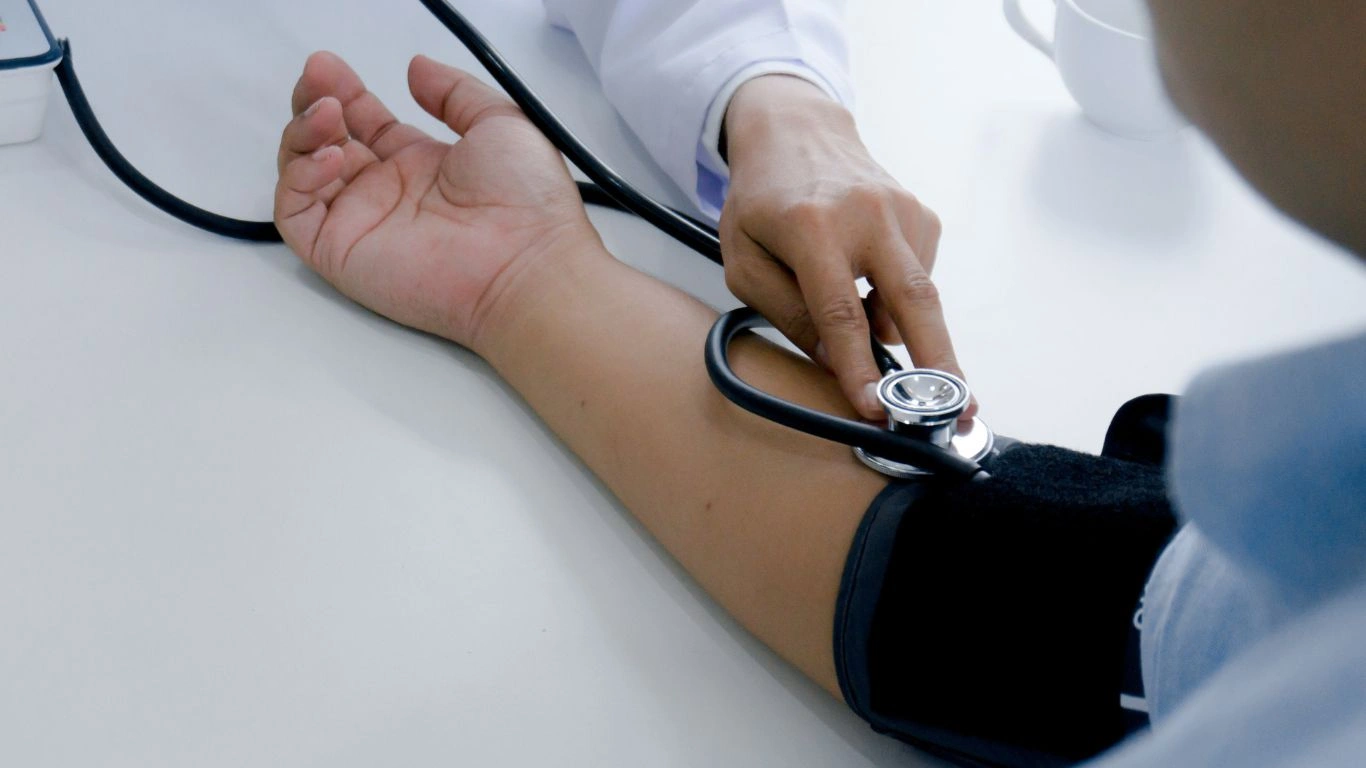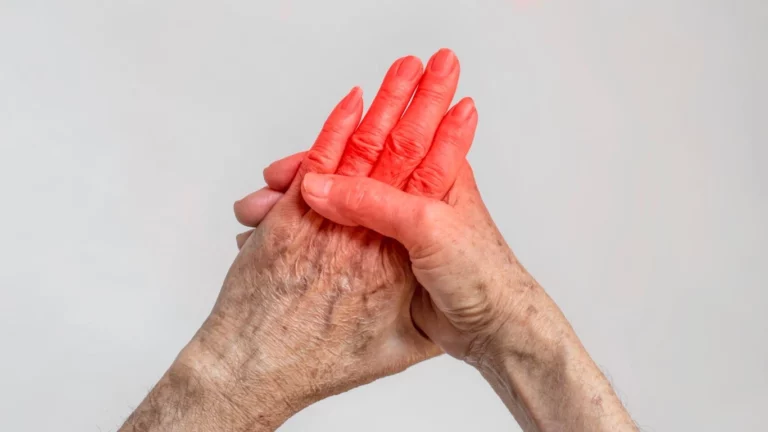How Cooking Methods Affect Sodium Intake for Better Health in Hypertension
As an Internal Medicine Physician specializing in hypertension management, I often see patients struggle with the impact of diet on their blood pressure. A major culprit in this regard is sodium, and many of us consume more of it than we realize. While most people think of sodium primarily as the salt we sprinkle on food, the way we prepare our meals can actually make a significant difference in our sodium intake. In this article, we’re going to explore how cooking methods affect sodium intake and what you can do to manage it better for your health.
The Role of Sodium in Your Diet
Sodium is an essential mineral that helps regulate fluid balance, nerve function, and muscle contraction. However, too much sodium can have a detrimental effect on your health, particularly if you have high blood pressure. The recommended daily intake of sodium for an average adult is about 2,300 milligrams, which is roughly equivalent to one teaspoon of table salt. But here’s the kicker: most of us are getting far more than that!
In fact, it’s estimated that the average American consumes more than 3,400 milligrams of sodium per day. That’s nearly 50% more than what the body actually needs. A large portion of that sodium comes from processed foods, but the way we cook can also significantly affect how much sodium we’re taking in.
Understanding Different Cooking Methods
When it comes to managing sodium intake, it’s not just about how much salt you add to your food. The cooking method you choose can either increase or decrease the amount of sodium in your meals. Let’s break down some common cooking techniques and how they impact sodium content.
1. Boiling
Boiling is a cooking method where food is submerged in hot water and cooked until it’s soft or tender. When you boil foods like vegetables, pasta, or potatoes, the sodium content can change depending on whether or not you add salt to the water. But even if you don’t, the natural sodium content of some foods may leach out into the water.
For example, boiled potatoes can lose some of their naturally occurring sodium into the water, but it’s typically a small amount. However, if you’re cooking something like pasta or grains, and you add salt to the boiling water, this sodium can be absorbed into the food itself. This can be an easy way to unknowingly increase your sodium intake.
To reduce sodium when boiling, try using less salt or none at all. You can also opt to cook vegetables in a steamer or use a different method that doesn’t involve submerging them in water.
2. Grilling
Grilling is another popular method, especially for meats and vegetables. When you grill, the food is exposed to direct heat from below. The beauty of grilling is that it allows fats to drip away, which can be a healthier way to prepare meat. However, grilling doesn’t affect sodium content directly unless you’re using a marinade or rub that contains salt.
If you’re concerned about sodium, be mindful of the ingredients you use when marinating your food. Many store-bought marinades and rubs are packed with salt, so opting for low-sodium versions or making your own at home can make a big difference.
3. Baking
Baking is another dry heat cooking method that’s great for preparing everything from casseroles to baked goods. While baking doesn’t introduce additional sodium directly into the food, it’s important to consider the ingredients you’re using.
For instance, processed cheese, canned soups, or pre-seasoned meats can all add a surprising amount of sodium to your dishes when baked. To keep things healthy, opt for fresh, unprocessed ingredients and try seasoning your food with herbs, spices, or lemon juice rather than relying on salt.
4. Sautéing and Stir-Frying
Sautéing and stir-frying are fast, high-heat cooking techniques that involve cooking food in a small amount of oil. This method is popular for preparing vegetables, fish, and meats. While sautéing or stir-frying doesn’t inherently increase sodium content, what you add during the cooking process matters.
If you’re using soy sauce, stock, or pre-seasoned sauces, these can be packed with sodium. For example, one tablespoon of soy sauce contains around 1,000 milligrams of sodium, which is almost half of the recommended daily intake! To reduce sodium, you can switch to low-sodium versions of sauces or experiment with other seasonings, like garlic, ginger, or fresh herbs, for flavor.
5. Frying
Frying, whether deep-frying or pan-frying, is a method where food is cooked by being submerged in hot oil. Similar to sautéing, frying doesn’t directly affect the sodium content unless the food itself is high in sodium. However, breaded and battered foods can have hidden sodium, particularly if they’re made with pre-packaged coatings.
To keep sodium levels in check, try to avoid using store-bought breading, or make your own with simple ingredients. Also, be mindful of processed foods like frozen chicken tenders or fries, which are often loaded with salt.

For a healthier approach, consider using non-stick pans or air fryers to prepare your foods with less oil, and use fresh, unprocessed ingredients whenever possible.
Practical Tips for Reducing Sodium While Cooking
Now that we’ve explored some of the most common cooking methods, let’s talk about some practical strategies you can incorporate into your kitchen routine to reduce your sodium intake:
- Use fresh ingredients: Fresh fruits, vegetables, and meats generally have less sodium than their processed counterparts.
- Season with herbs and spices: Instead of reaching for the salt shaker, experiment with fresh herbs, garlic, lemon, and other spices to enhance flavor.
- Read food labels: Pay attention to sodium content when buying pre-packaged or canned goods, and choose low-sodium options whenever possible.
- Cook from scratch: By preparing meals at home, you can control exactly what goes into your food and avoid hidden sodium in processed ingredients.

By being mindful of your cooking techniques and ingredient choices, you can make a huge difference in your sodium consumption without sacrificing flavor.
How Cooking Methods Affect Sodium Intake: The Impact of Popular Cooking Techniques
In Part 1, we explored the basics of sodium in the diet and how different cooking methods can affect the amount of sodium in your food. But let’s dive deeper into a few more cooking techniques that you might not realize can influence sodium intake, especially for those of us managing hypertension. I’ve had many patients, over the years, tell me they were “cooking healthy” by boiling their vegetables or grilling their chicken, but they were still dealing with high blood pressure. Turns out, the sodium in their food could be coming from the way they were preparing it!
Slow Cooking and Pressure Cooking: A Double-Edged Sword
Slow cooking and pressure cooking are becoming increasingly popular because they offer a hands-off approach to meal prep. I personally love using my slow cooker during busy weeks, but it’s important to recognize that these methods can sometimes introduce excess sodium, especially if you’re relying on pre-packaged broths, sauces, or seasoning mixes. While the slow cooker’s long cooking times help tenderize meats and blend flavors, they also allow salt to concentrate as the liquid reduces over time.
Pressure cooking, on the other hand, might preserve some of the sodium in the cooking liquid since the process is much faster. But if you’re using store-bought broths or ready-made sauces, those salty flavors will likely seep into the food. A great way to reduce sodium here is to make your own low-sodium broths, or simply add herbs like rosemary or thyme, which are natural flavor boosters.

If you do opt for these methods, try to limit the salt in your cooking liquids or go for natural, homemade alternatives. Your body will thank you for it in the long run, and your taste buds will still be satisfied.
Microwaving: The Hidden Sodium in Ready-Made Meals
We all know how convenient the microwave can be. Whether it’s reheating leftovers or cooking a frozen meal, the microwave is one of those “lifesaver” tools for busy days. But did you know that many frozen meals and packaged microwave dinners are loaded with sodium? I often see patients who think they’re making a quick, healthy choice with a frozen vegetable medley or a “low-fat” dinner—only to find out later that their sodium intake is through the roof.
The reason? Many processed foods (even the ones marketed as healthy) are preserved with high amounts of salt to enhance flavor and increase shelf life. Microwaving those meals doesn’t change the sodium content; it just heats it up!
To cut down on sodium when using the microwave, you can prep your meals in advance with fresh, unprocessed ingredients. And when you’re in a pinch, look for frozen veggies or meals labeled as “no added salt.” It’s not a perfect fix, but it’s a step in the right direction!

Cooking from scratch in the microwave, like steaming vegetables in a microwave-safe dish with a small amount of water, can be a healthier alternative. This way, you still enjoy the speed and ease of the microwave without the added sodium.
Steaming: A Safer Bet for Sodium Control
If you’re looking for a cooking method that’s gentle on sodium, steaming is one of your best bets. Steaming vegetables or fish doesn’t require any added salt or fat, and it preserves most of the food’s nutrients, which is a win-win! Plus, steaming helps maintain the natural flavors of your ingredients, so you don’t have to rely on salt for taste.
Personally, I love steaming my vegetables, especially if I’m pairing them with a lean protein like chicken or fish. It’s quick, simple, and, most importantly, allows me to control sodium without sacrificing flavor. If you’re someone who loves fresh, vibrant vegetables, steaming is the way to go!

Another added benefit is that steaming vegetables helps retain their vitamins and minerals, which are often lost in other cooking methods like boiling. So, next time you’re making broccoli or spinach, give steaming a try—you’ll taste the difference and get a healthier meal overall.
Common Mistakes That Increase Sodium Intake Without Realizing It
Even when we try to make healthy choices in the kitchen, there are some common mistakes we make that unknowingly lead to higher sodium consumption. I’ve worked with many patients who thought they were doing everything right—choosing whole foods, avoiding added salt, and using “heart-healthy” ingredients—only to find that they were still consuming more sodium than they should.
1. Relying on Canned Foods
Canned foods are incredibly convenient, and I get it. After a long day, popping open a can of beans or soup seems like an easy, nutritious choice. But here’s the problem: many canned foods, especially soups, beans, and vegetables, come with a surprising amount of sodium. The sodium is used as a preservative, and unfortunately, it can sneak into your meals without you even realizing it.
Look for canned items labeled as “no added salt” or “low sodium.” And whenever possible, try to cook from scratch. Fresh beans, for example, are easy to cook in a slow cooker or pressure cooker, and they’re way lower in sodium than the canned version. If you absolutely must use canned items, remember to drain and rinse them before cooking to wash away some of the sodium.
2. Using Pre-Packaged Seasoning Mixes
Seasoning mixes—like taco seasoning, gravy packets, and pre-made marinades—can be a major sodium culprit. While these mixes are super convenient, they are often packed with salt. Even some of the “low-sodium” versions can still be loaded with sodium, especially if you’re using them frequently in large quantities.
Instead of buying those pre-packaged mixes, try making your own. I’ve found that mixing up a batch of seasoning at home—using garlic powder, onion powder, cumin, or even lemon zest—can create the same flavorful punch without all the extra sodium. It’s a little more effort, but the taste and health benefits are totally worth it.
By being mindful of the little sodium pitfalls in our daily cooking habits, we can make smarter choices and manage our sodium intake much more effectively.
Final Thoughts on Cooking Methods and Sodium Intake: Simple Changes for Better Health
We’ve already covered how cooking methods like grilling, boiling, and steaming can significantly influence your sodium intake. But what about some additional strategies to keep sodium in check? As someone who’s been helping patients manage their hypertension for years, I can tell you that the small changes in how you cook can truly make a big difference over time. Let’s dive into some of the last few tips that can help you continue making heart-healthy choices in the kitchen.
Meal Prepping: A Powerful Tool for Sodium Control
One of the best ways to stay on top of your sodium intake is by planning ahead. And that’s where meal prepping comes in. I know, it sounds a little intimidating at first—spending hours on a Sunday chopping, cooking, and packing meals for the whole week. But in reality, meal prepping is one of the most effective ways to control what goes into your food, especially if you’re concerned about sodium.
When you prep your meals in advance, you have full control over the ingredients you use. You can skip processed foods and pre-seasoned ingredients, making it easier to stay within your desired sodium range. Plus, it cuts down on the need for last-minute, possibly sodium-packed takeout or frozen meals.
For instance, I often suggest making large batches of things like quinoa, grilled chicken, or roasted vegetables at the beginning of the week. You can then mix and match these ingredients throughout the week for quick, healthy meals. Not only does this help you stay organized, but it also ensures you’re consuming fewer sodium-laden processed foods.

Choosing Whole Foods Over Processed Foods
It may sound like a no-brainer, but the truth is that most of the sodium in our diet comes from processed foods. While fresh fruits, vegetables, whole grains, and lean proteins naturally contain little to no sodium, their processed counterparts can be loaded with it. That’s why, as part of my advice to my patients, I recommend focusing on whole foods and limiting highly processed items.
Processed meats like deli meats, sausages, and hot dogs are some of the biggest culprits when it comes to added sodium. Even canned vegetables, soups, and sauces often have far more sodium than you might expect. This isn’t to say that you can never enjoy these foods, but it’s important to be mindful of how often you’re consuming them. And when you do, try to opt for versions with reduced sodium.
In my experience, shifting towards a whole-food diet can not only reduce sodium intake but also improve overall health in a number of other ways—helping with weight management, lowering cholesterol, and even improving digestion. If you’re looking to make a meaningful change, starting with fresh, unprocessed foods is an excellent way to reduce your sodium without feeling like you’re depriving yourself.
Learning to Read Nutrition Labels
One of the easiest ways to manage sodium intake is by becoming a label-reading expert. Many packaged foods contain surprising amounts of sodium, and manufacturers often use different terms for salt. When you’re out shopping, take a moment to check the nutrition label before putting a product in your cart.
You’ll want to focus on the “% Daily Value” (DV) for sodium. According to the FDA, foods that contain 5% DV or less of sodium per serving are considered low sodium, while those with 20% DV or more are considered high sodium. If you’re aiming for a sodium intake of around 2,300 milligrams per day, this will give you a good sense of how much sodium is in the foods you buy.
Also, be on the lookout for terms like “sodium chloride,” “monosodium glutamate (MSG),” and “sea salt,” as these are all sources of sodium in processed foods. If the list of ingredients includes any of these, it’s a good sign that the product is higher in sodium.
Cook at Home More Often: An Easy Solution for Healthier Meals
If there’s one takeaway from this entire discussion, it’s that cooking at home is one of the best ways to manage sodium intake. When you cook your meals from scratch, you have full control over the ingredients, including how much salt is added. Plus, preparing meals at home is often more cost-effective than eating out or buying pre-packaged foods.
Now, I understand that not everyone has the time or inclination to cook every single meal from scratch. But even making a few meals a week at home can drastically cut down on your sodium consumption. It’s all about balance. If you’re short on time, consider preparing big batches of staples like rice, beans, or soups that can be stored and enjoyed throughout the week. And when you do need to rely on convenience foods, try to pick lower-sodium options and be mindful of portion sizes.
As a healthcare provider, I’ve seen the positive impact that simple dietary changes, like reducing sodium, can have on blood pressure and overall health. It doesn’t have to be a complicated or overwhelming process. By being mindful of the cooking methods you use, the ingredients you choose, and the way you prep your meals, you can manage your sodium intake with ease.

Final Takeaways
Managing sodium intake is crucial for maintaining heart health and preventing or managing hypertension. By being conscious of the cooking methods you use, paying attention to food labels, and making smart choices about what goes into your meals, you can significantly reduce your sodium consumption without sacrificing flavor.
Whether it’s opting for steaming over boiling, choosing fresh over processed foods, or simply cooking at home more often, every little change adds up. And the best part? You’re not alone in this journey. There are plenty of resources available to help you make heart-healthy choices, and don’t forget that a healthcare provider—like me—can guide you with personalized advice tailored to your needs.
So go ahead and experiment with different cooking techniques, get creative with your seasonings, and don’t forget that every small change you make can have a positive impact on your health in the long run. You’ve got this!
Disclaimer: The information in this article is intended for educational purposes and should not be used as a substitute for professional medical advice, diagnosis, or treatment. Always consult your healthcare provider before making any significant changes to your diet or lifestyle.
For more information on managing hypertension through diet and lifestyle, feel free to check out HealthUsias.

Dr. Gwenna Aazee is a board-certified Internal Medicine Physician with a special focus on hypertension management, chronic disease prevention, and patient education. With years of experience in both clinical practice and medical writing, she’s passionate about turning evidence-based medicine into accessible, actionable advice. Through her work at Healthusias.com, Dr. Aazee empowers readers to take charge of their health with confidence and clarity. Off the clock, she enjoys deep dives into nutrition research, long walks with her rescue pup, and simplifying medical jargon one article at a time.






